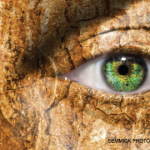As she ate breakfast on her third day in the intensive care unit, Amanda’s eyes suddenly rolled back, and she suffered a grand mal seizure—a known complication of lupus. The force of the seizure ripped the IV from her forearm, splattering blood and IV fluid onto the bed sheet and floor. The oxygen line snapped off the wall mount, and Amanda’s oxygen level plummeted. Fortunately, the catheter extending from her chest wall into the pericardium of the heart was pinned to her hospital gown and remained in place.
The IV was re-inserted, and an infusion of Valium (diazepam) and Dilantin (phenytoin) terminated the seizure. A portable CXR confirmed the worst; half her right lung was a blotchy whiteout; she’d aspirated a portion of her breakfast. An ICU attending intubated her, and her vital signs stabilized on the ventilator. A computed tomography (CT) scan of the brain, thankfully, didn’t demonstrate a bleed. The neurologist on call performed a spinal tap. The results were consistent with lupus.
As the days dragged by, only her youth saved her. High-dose steroids were critically necessary, but increased the likelihood of an opportunistic infection. Thankfully, the steroids kicked in before a secondary infection complicated the picture. On Day 6, she was off the ventilator. Her urine output rebounded. The vasculitic skin rash faded. Her blood counts improved.
I wrote an extended chart note. Like the parable of the blind men and the elephant, I knew from previous experience that each medical specialist approaches lupus from a narrow perspective, and their recommendations reflected this. If a blind man touches the trunk of the elephant rather than the floppy ears or comes up against the massive flank rather than the delicate tail, the description of the elephant will be incomplete or, worse, inaccurate.
Of course, I didn’t recount the parable of the blind men and the elephant in my note—that would be presumptuous, but I knew that while each medical specialty has a piece of lupus, rheumatology is best positioned to see the big picture, the entire disease. After the pericarditis resolved and the chest drain was pulled, Amanda wouldn’t need to see a cardiologist. As her blood counts rebounded, hematology follow-up could prove unnecessary. The neurologist who performed the spinal tap would continue to see her as an outpatient, but the focus would be narrow. Depending on how her kidneys responded to immunotherapy, even long-term follow-up with the nephrologist would likely be episodic.


